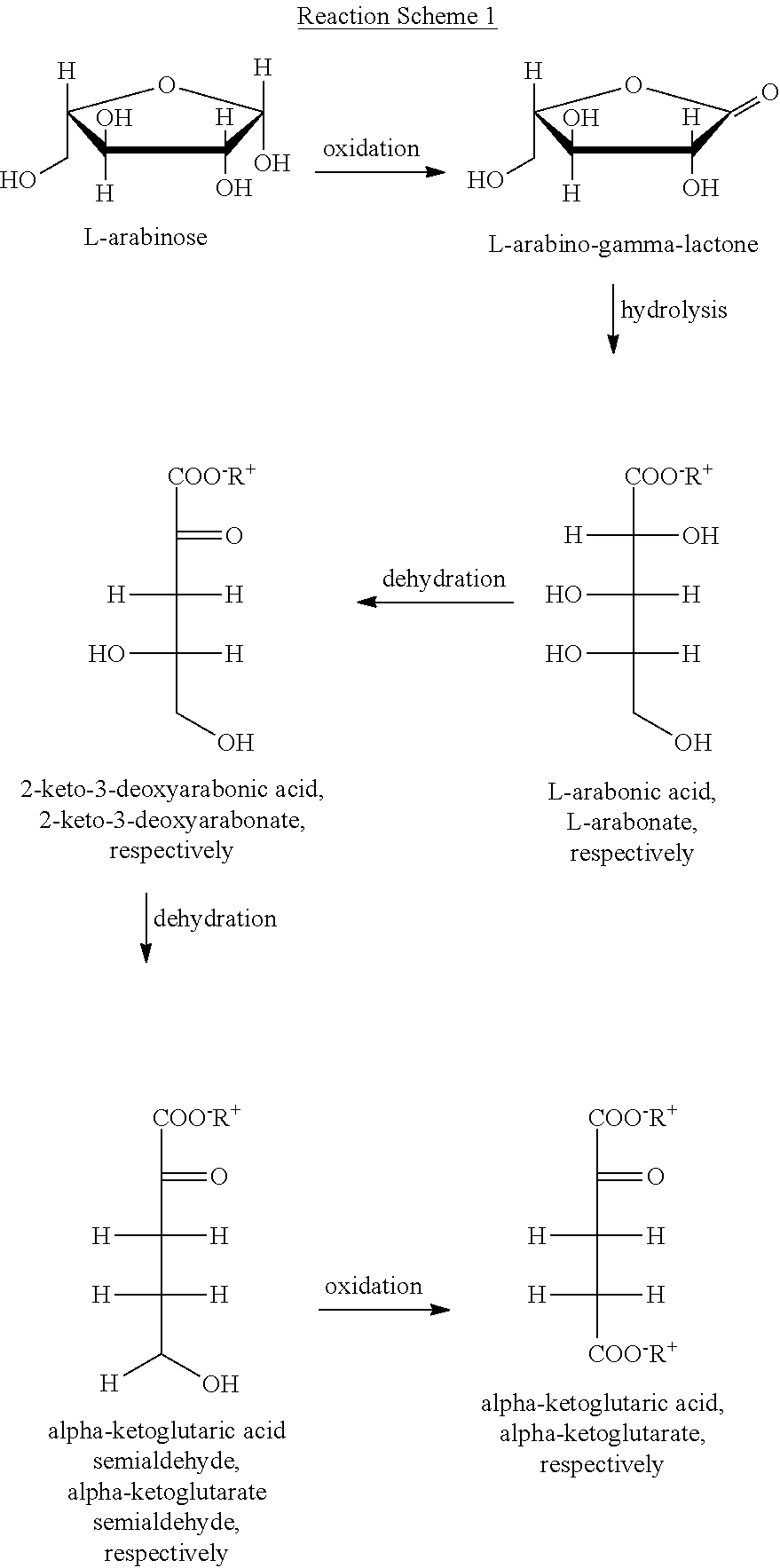Method for obtaining sugar derivatives
a technology of sugar derivatives and sugar solutions, applied in the direction of monosaccharides, enzymes, biochemistry apparatus and processes, etc., can solve the problems of large amount of acid consumed, cost of sugar solution concentration, and nonspecification of hydrolysis
- Summary
- Abstract
- Description
- Claims
- Application Information
AI Technical Summary
Benefits of technology
Problems solved by technology
Method used
Image
Examples
example 1
Enzymatic Hydrolysis of a Hemicellulose-Containing Material
[0051]Xylan is suspended in an acetate buffer with pH 4.3 at a concentration of 8% (w / v) and mixed with ACCELLERASE® TRIO™ of the Genencor company at a concentration of 1 g enzyme solution per 1 g of xylan. The batch is stirred at 50° C. for 24 h. The pH-value is checked and readjusted in case of a deviation of above 4.5 or below 4.1. The batch is filtered through a Büchner funnel and the filtrate (hydrolysate) is analyzed for its composition of monomers and their concentration by means of HPLC-LEX-DAD. A concentration of about 6% of xylose, 0.43% of arabinose and 0.27% of glucose is contained in the filtrate. In this way, about 85% of the xylose obtained in the xylan is obtained in a monomeric form.
example 2
Analysis of the Hydrolysate by HPLC
[0052]500 μl of the filtrate of the xylan hydrolysis according to Example 1 is centrifuged, and the supernatant is then passed through a 0.2 μM PVDF (poly-vinylidene-difluoride) filter and analyzed by means of HPLC-LEX-RID (Agilent Technologies Inc.). The sugars are thereby separated via a lead column (Shodex® Sugar SP0810) of Shodex Denko K.K. with a flow of 0.5 ml / min of water (VWR: HPLC Grade) at 80° C. The detection is effected by means of Agilent RID. An inline filter of Agilent Technologies Inc. and, as precolumns, a reversed-phase column (Axpak-WA-G), an anion-exchange column (Shodex® Asahipak® ODP-50 6E) and a sugar precolumn (Shodex® SP-G), each supplied by Showa Denko K.K., are used.
example 3
Oxidation of L-Arabinose to Arabonate by an Arabinose Dehydrogenase with Cofactor Recycling Via an Alcohol Dehydrogenase and Subsequent Hydrolysis of the Lactone by Caustic Soda Lye
[0053]A 0.5 ml batch contains 50 mg / ml of arabinose, 5 U / ml of the recombinant arabinose dehydrogenase from Burkholderia vietnamiensis and a mixture of 0.5 mM NADP+ and 0.5 mM NADPH. For the regeneration of the cofactor, 2.5% (w / v) acetone and 5 U / ml of the recombinant alcohol dehydrogenase from Lactobacillus kefir are added. The enzymes are used in the form of a cell lysate. The reaction takes place at 40° C. and pH 10 for 24 h under continuous shaking (900 rpm). After 24 h, the reaction vessel is incubated at 60° C. for 10 min in order to inactivate the enzymes. Subsequently, 5 μl of 2 M NaOH is added.
[0054]In this way, more than 60% of the L-arabinose is converted into sodium-L-arabonate. The analysis is effected with GC-MS.
PUM
| Property | Measurement | Unit |
|---|---|---|
| temperature | aaaaa | aaaaa |
| temperatures | aaaaa | aaaaa |
| temperatures | aaaaa | aaaaa |
Abstract
Description
Claims
Application Information
 Login to View More
Login to View More - R&D
- Intellectual Property
- Life Sciences
- Materials
- Tech Scout
- Unparalleled Data Quality
- Higher Quality Content
- 60% Fewer Hallucinations
Browse by: Latest US Patents, China's latest patents, Technical Efficacy Thesaurus, Application Domain, Technology Topic, Popular Technical Reports.
© 2025 PatSnap. All rights reserved.Legal|Privacy policy|Modern Slavery Act Transparency Statement|Sitemap|About US| Contact US: help@patsnap.com

